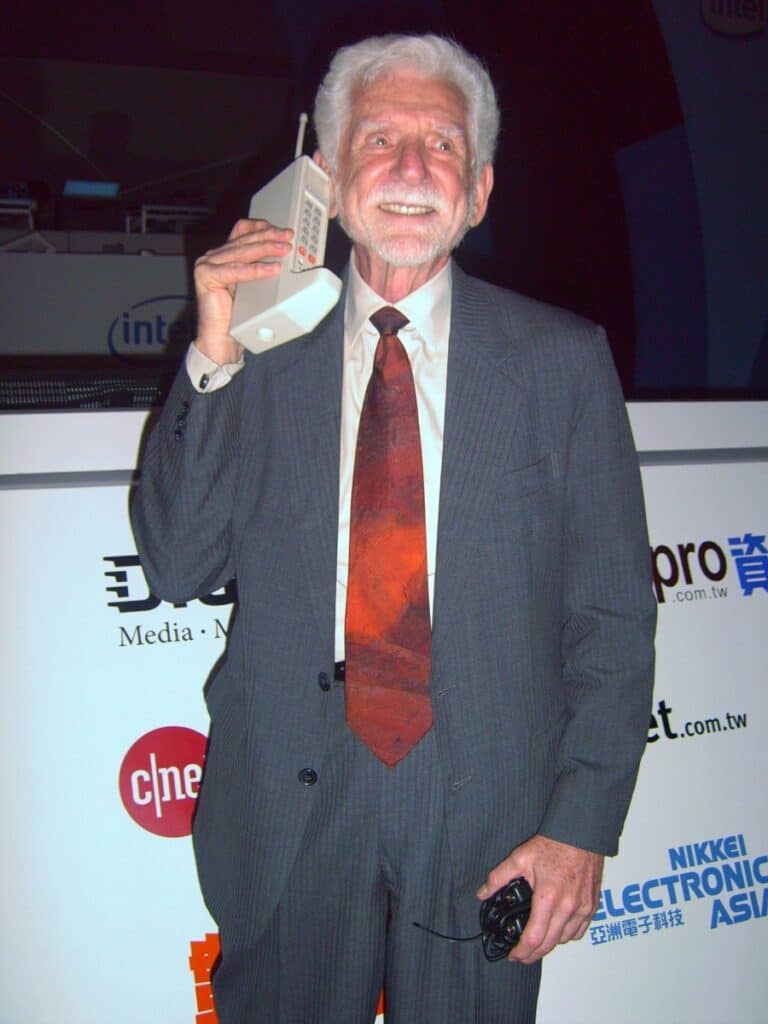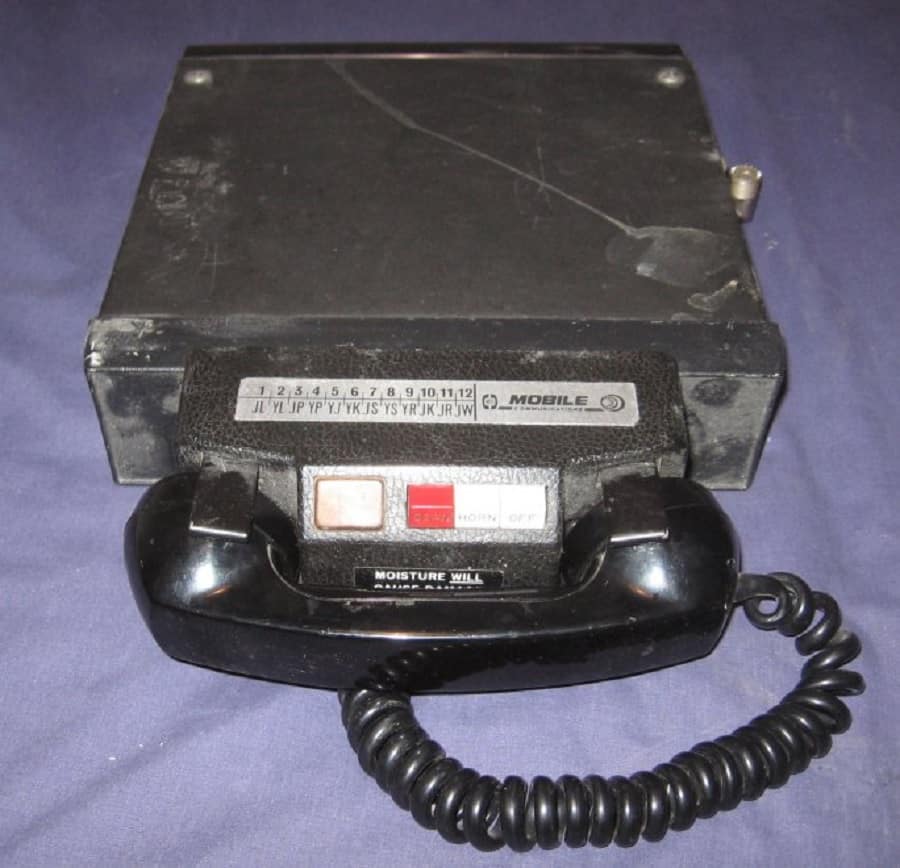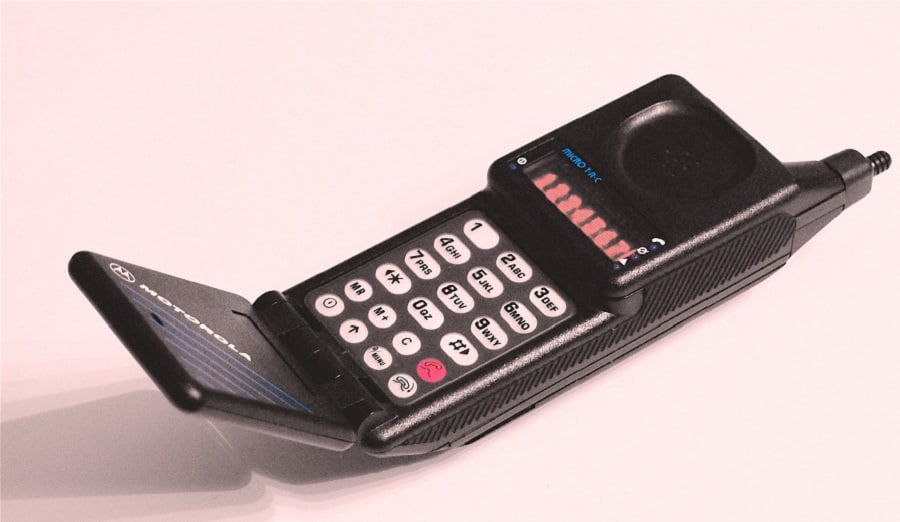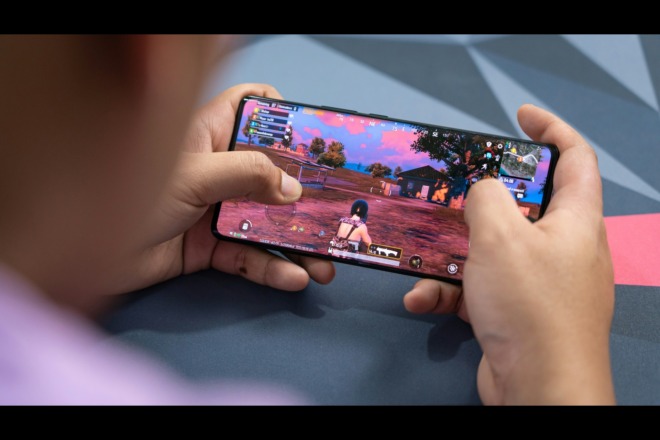There was a time in history when phones connected to a landline. If you were out and about, you had to find a phone booth or borrow someone’s home or business phone to make a call. When did cell phones come out and begin to change the world as we know it? Today, one can’t imagine going somewhere without a mobile device that connects you to anyone, anywhere.
Those who are over 40 remember the first phones hitting the market in the 1980s, but the first device was invented long before it made it to market decades later. When asking “When did cell phones come out?”, you must look at the history of the cell phone and what led to its mass market release.
When Did the Cell Phone Come Out?
One could argue cell phones were invented in the 1940s due to the use of mobile telephony under car dashboards. However, the true, cordless phone for the general public is more commonly seen as being from the mid 1980s and beyond. The first commercially available cell phone came out in the year 1983 when Motorola released the DynaTAC 8000x.
Back in 1946, Southwestern Bell routed calls around the country. On June 17th of that year, the history of mobile technology began when a driver made a call via a handset in his vehicle. Because the technology was in the beginning stages, only a few calls could be made at a time.
The service cost $15 per month plus $3.50 to $4.65 for each call–a heft price for the time. Since the service was limited to just 100 cities and about 5,000 customers, it wasn’t commonplace. It did set the stage for the freedom of making a phone call while on the go.
One of the first calls from a handheld mobile phone was in 1973 by Martin Cooper. The phone was shaped somewhat like a brick and various reports estimate it weighed around two pounds. Can you imagine carrying that size cell phone around in your pocket? The first phone had to be charged for 10 hours and worked for a 30-minute call.
The next 50 years or so saw rapid advances as the size grew smaller, batteries more powerful and range longer.
A Timeline of the Cell Phone and Its Evolution

1926: Nikola Tesla predicted cell phone technology.
1945: Mobile telephony services were in their infancy.
1965: Technicians opened more channels and improved mobile telephony service. Technicians introduce Radio Common Carrier (RCC) technology, which would be used until the 1980s. Car phones were possible for the wealthiest people.
1973: Martin Cooper made the first call on a cellular device.
1983: Motorola released the DynaTAC 8000x for nearly $4,000. With inflation, the phone would cost over $10,000 today. The high price tag made it unobtainable for the masses.
1989: The Micro-Tac flip phone by Motorola arrived. The much smaller phone is closer to something people might carry every day, opening the possibility of more people owning their own cellular device. The phone could only make and receive calls at this time.
1992: Nokia released the 1011 model for the masses. It was small enough to fit in a pocket and weighed 500 grams.
1997: Mobile phones during this time began to function more as mini-computers. The Siemens S10 offered color displays, Nokia and Ericsson offered ways to customize your phone and make it match your style.
2000: At the turn of the century, Nokia released the 3310, which added the ability to send SMS, introducing people to texting for the first time. The phones required the user to tap several times to get to the character they desired on a tiny keyboard. Functionality would come later, but the shift from phone to mini-computer was well under way. The phone also was more durable than previous models and came with a game and the ability to set a background wallpaper and add a unique ringtone.
2005: Phones, such as the Nokia 7600 came with cameras and connected to the internet, introducing the first version of the smartphone.
2007: The first touch screens hit the market, improving user experience and making texting easier.
2008-2009: Android and iOS operating systems arrived on the scene. The Apple and Google Play stores opened, introducing more functionality to the mini computers people ere carrying around.
2010s: Faster 4G networks arrived, mobile app usage grew and Apple introduced facial recognition and a bezel-free design.
2020s: Battery life improved, people began using smart watches alongside mobile devices. During the 2020s, so far, cameras improved drastically. Professionals can now use some models the same way they’d use a DSLR camera. Accessories can improve the lens or lighting. Around 70% of the world now uses smartphones.
Future: Advances in artificial intelligence may turn smartphones into personal assistants. Wireless charging is in the works and batteries will last longer than ever before. We may see holographic displays and more interactivity with the world around us.
No matter where the future takes cell phones, knowing the history and how we got to where we are today helps you understand the effort it took to develop the technology. Here is an in-depth look at the history of the cell phone.
The First Cell Phones
According to Pew Research Center, approximately 97% of Americans own a cellphone today, with 85% owning a smartphone. How did we get from when cell phones came out to here?
To fully understand the history behind when cell phones came out, you have to look at the evolution of mobile telephony. From a few people having dashboard mobile handsets in their cars to today’s cellphones in nearly every hand, phones have changed a lot in 80 years or so.
Inventor Nikola Tesla predicted wireless devices as far back as 1926. In an interview, he stated wireless would be a huge brain one day and people would be able to “communicate with one another instantly, irrespective of distance.” He also predicted humans would be able to see and hear each other as though face to face.
First Improvements
From the initial mobile telephony service introduced in 1945, technicians began improving the system. In 1965, they introduced the Improved Mobile Telephone Service (IMTS). The new service tapped into more radio channels and added the ability for more people to call within a region and let customers dial their own calls rather than going through an operator.
In the United Kingdom, the phone company introduced a separate vehicle phone in 1959 with similar abilities to the one introduced in the United States. IMTS was similar to the first mobile telephones but had expanded range and scope.

Radio Common Carrier (RCC)
By the 1960s, various telephone companies introduced mobile radio telephones. They used UHF 454/459 megahertz and VHF 152/158 Megahertz frequencies. The frequencies would be utilized into the 1980s when cellular made a giant leap and RCC became obsolete–much as the 8-track tape.
Cellular Network Arrives
Some might argue the point on when did cell phones come out and point to the development of cellular networks as the true moment when mobile devices were open to the general public rather than the rich and famous.
Back in 1947, Bell Labs engineers had an idea for how to use mobile phones in vehicles. The concept used hexagonal cells to create a multi-directional network for cellular devices. Initially, the coverage area was poor, but as they tried different processes and learned to handoff calls from one cell tower to the next, they began to form the basis of a data signal system that would eventually bring cell service to all but the remotest of areas.
Today, the average user spends three hours and 35 minutes a day on their mobile phone. When did cell phones come out so people could buy them?
Cell Phones of the 1980s and 1990s

In 1983, Motorola launched the DynaTAC 8000x. A decade after Martin Cooper’s first call, this phone is often referred to as the first commercially available handheld mobile. While it was indeed a marvel for its time, it’s a far cry from the sleek smartphones we’re accustomed to today.
The DynaTAC 8000x was a hefty device in size and weight. It stood over a foot tall and came with an antenna that made it even more clunky. It was also priced at nearly $4,000 at launch. Therefore, owning one was a symbol of status and affluence. The handset featured an LED display for dialing and recalling up to 30 phone numbers.
However, it wasn’t just the physicality and price that differentiated the DynaTAC from today’s phones. Its functionality was basic, limited primarily to making and receiving calls. There were no apps, text messaging and certainly no internet browsing. In fact, it allowed you to talk for only up to 30 minutes with eight hours of standby.
Yet, its release was the start of a new era where communication was no longer tethered to landlines.
The Downsizing of the Brick Phone
As the brick phone became more readily available to the public. it was still bulky and limited. However, it rapidly started shrinking in size and cost until 1989 when Motorola released the first flip phone, a Micro-Tac. The MicroTac could fit inside your pocket.
The phone was analog and only used for placing telephone calls. It wouldn’t be until the 1990s that phones began to have the capability to send texts or get online. Both the internet and cellular technology had to reach a point where phones were able to be used as mini portable computers.
Around the turn of the century, Nokia released the 6000 series, making phones more affordable for everyday people and bringing the size to palm size. Samsung also released the SPH-I300 where users could touch the screen to make a call, paving the path for smartphone technology.

The Rise of the Smartphones
The next phase was adding cameras and the ability to text and browse the internet. Enter the RAZR and later the iPhone, which hit the scene in 2007. It’s hard to imagine that iPhones came on the scene a mere 15 years or so ago. They continue to push the edges of technology with new releases annually.
With its sleek design, touchscreen interface and app-based system — it transformed more than how people use their phones — it also changed their expectations of what it could do. The App Store, launched a year later in 2008, opening the floodgates for software developers worldwide. It enabled them to create various applications that catered to virtually every user need, from productivity and gaming to health and education.
While the iPhone was a game-changing device, it was by no means alone in the smartphone revolution. Google’s Android operating system debuted in 2008, providing a platform for numerous manufacturers like Samsung, LG and HTC. This allowed companies to produce smartphones for diverse markets and preferences.
Smartphone technology then rapidly expanded global access and brought about intense competition, driving innovation at an unprecedented pace.
The rise of smartphones also impacted social dynamics and behaviors. Platforms like Facebook, Instagram and Twitter found a natural home on mobile devices. The convenience of capturing, sharing and consuming content on the go created the rise of a truly global digital culture.
Over the years, the line between a phone and a computer blurred. With faster processors and larger memory capacities, smartphones became indispensable tools for work and play.
The Future of Cell Phones
When looking to the horizon, the future of cell phones appears boundless. Smartphones will be driven by rapid technological advancements and features catering to new user needs. Here are some of the directions and innovations that could shape the next generation of mobile devices:
- Augmented reality (AR) and virtual reality (VR): Integrating AR and VR into smartphones will offer a more immersive experience. It will transform industries in gaming, education and health care. So, instead of looking at your screen, you may soon interact with digital elements mixed into a real-world environment.
- Foldable and Flexible Screens: While some companies have already introduced foldable smartphones, future iterations will likely become more refined. This will lead devices to bend, fold and even roll up. This flexibility can redefine the concept of “screen real estate.”
- Improved battery technology: As phones become more powerful, the demand for longer-lasting batteries intensifies. Innovations in battery technology, possibly moving beyond lithium-ion, could offer users days of use on a single charge.
- Sustainable and eco-friendly devices: With increasing awareness of environmental concerns, the push for sustainable materials and eco-friendly manufacturing processes will become standard. You may even see phones made from recycled materials or designed for easier recyclability at the end of their lifecycle.
What’s In Store for the Future of Cell Phones?
The advances in mobile ability in about 70 years are quite amazing. Only by utilizing teams of the smartest and most creative people were phone companies able to change the face of communication as we know it.
Where will cell phones go in the future? Expect even more abilities. Cameras will grow better, charging times shorter and battery life longer. Although there are still some minor limitations with smartphones, those will likely go away as artificial intelligence and virtual reality advances even further.
The internet of things (IoT) will continue to grow until more devices are connected to the IoT than aren’t. Everything will have a central hub and all things will be able to learn from one another to make people’s lives easier and more efficient.


